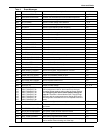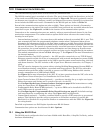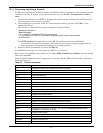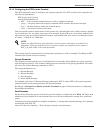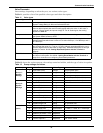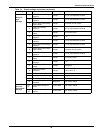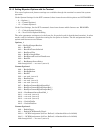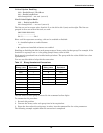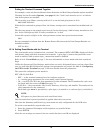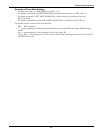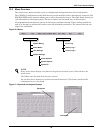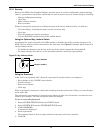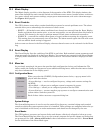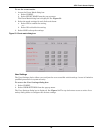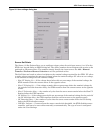
Communication Interfaces
83
Putting the Terminal Command Together
For example, a unit only has the Remote Source Selection and Dual-Output Breaker options installed.
Checking the bits list under Options_1 on page 81, bits 7 and 0 each must be set to 1 to indicate
that these options are installed.
The bit setting is as follows, starting with bit 15 on the left and going down to bit 0:
0000 0000 1000 0001
With the bits combined in groups of four, the binary settings can be translated into hexidecimal val-
ues.
The first two groups in the sample equal zero (0). In the third group, 1000 in binary translates to 8 in
hex. In the fourth group, 0001 in binary translates to 1 in hex.
In hex this equates to (digits in the value parameter cannot have spaces between them):
0081
So your command to indicate that the Remote Source Selection and the Dual-Output Breaker are
installed would be:
SPT 2 6 0081
12.1.4 Setting Event Masks with the Terminal
The event masks can be customized via a terminal. The command SPT4?<ENTER> displays all faults
and alarms, along with their associated event masks. A plus sign (+) means that particular event
mask is enabled, while a minus sign (-) means that mask is disabled.
Refer to 11.1 - Event Mask on page 71 for more information on event masks and their associated
flags.
Unlike the System and User Settings, mask values are set by designated letters, not hex values. How-
ever, as with other RS-232 interface settings, four parameters are passed. See 12.1.2 - Configuring
the STS2 via the Terminal on page 78 for more details about the parameters.
The syntax for configuring event masks is:
SPT 4 ID ±D±L±S±E±A
• SPT — is the terminal command used to configure setpoints.
• 4 — setting (group parameter) for event masks, under System Settings.
• ID — event ID. The ID is the item parameter for this command. The ID numbers for each event
are listed with the events in Table 9 on page 74.
• D,L,S,E,A — the event masks: Dial, Latch, Summary, Event log, and Audible. The masks are the
value parameter for the command.
Each mask type must be preceded by a plus sign (+) to enable it, or a minus sign (-) to disable it.
Only the mask that is passed (enabled) is applied when the event occurs.
Note that the Summary and Event Log event masks are only configurable for the LED units.
To set the event masks for a particular event:
1. Enter the command. Examples and descriptions are provided below.
2. Press ENTER.
After the new settings are entered, the new results for that event ID are displayed.
NOTE
NO spaces are placed between each mask listed above.



